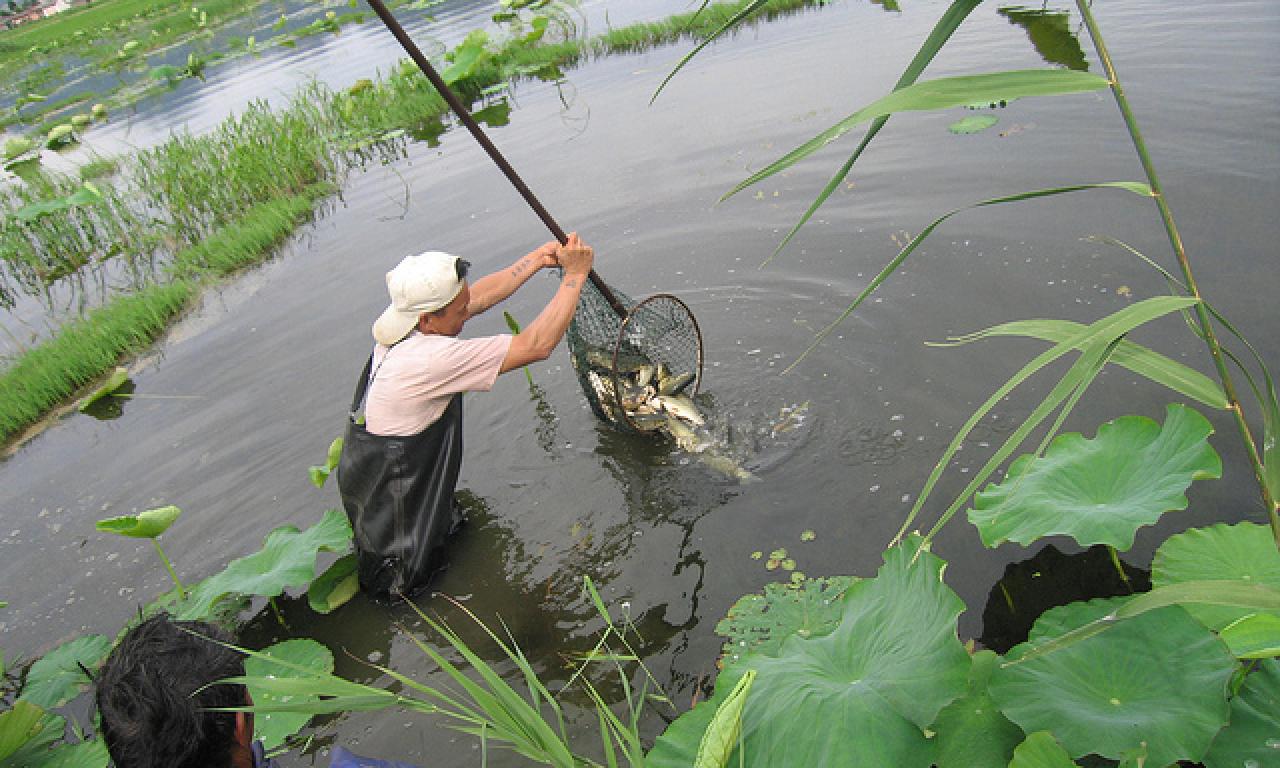
Having recently entered the Chinese Year of the Goat. I checked whether there is ‘Year of the Fish’ in the Chinese animal zodiac – there isn’t. I was disappointed because of all the animals one could choose to associate with China, fish should be top on the list.
Recommended publications
- Servicing the aquaculture sector: role of state and private sectors
- Small-scale aquaculture: Global and national perspectives
Having recently entered the Chinese Year of the Goat. I checked whether there is ‘Year of the Fish’ in the Chinese animal zodiac – there isn’t. I was disappointed because of all the animals one could choose to associate with China, fish should be top on the list.
A seafood powerhouse
When we think about the global fish food system, China dominates by a considerable margin. Following reforms in the late 1970’s, Chinese fish consumption rose from 10kg/capita to 30kg today, making China the world’s biggest seafood market.
China is also the worlds leading fish producer. In 2012, 40 percent of all seafood was produced by China. In the past 12 years, China has emerged as one of the world’s leading fishing nations and its aquaculture industry supplies 60 percent of all farmed fish. A hub for processing seafood, China is also the world’s leading fish exporter. Total export value in 2011 was $16 billion with compound annual growth rates of 15 percent between 2000 and 2011.
Growing demand
For the rest of the world’s fish consumers, the dominance of China as both a producer and consumer should be considered in the context of rapidly rising incomes among the Chinese people.
Chinese consumers seafood choices are especially sensitive to changes in income. From the lowest to the highest income group the percentage of food expenditure devoted to fish rises from 5.4 to 7.5 percent. In contrast, the amount devoted to meat falls from 22 to 14 percent. This occurs because consumers switch to more expensive forms of fish: the richest 10 percent of the population eat seven times more shrimp than the poorest, but only 1.4 times more pork.
One can also look at what’s on the table during celebrations to see the importance of luxury seafood in the Chinese culture. Lavish New Year banquets will contain abalone, scallops, sea cucumber, shrimp, sea bass and grouper.
The future for China?
For aquaculture, the dominant source of seafood for domestic consumers, there are three basic product categories: lower value ‘domestic staples’ (e.g. freshwater carps and clams), high value ‘domestic champions’ of particular value to the Chinese (e.g. sea cucumbers and sea urchins), and ‘double winners’ species of interest both domestically and in export markets (e.g. tilapias, shrimp).
It seems likely that domestic staples will continue to dominate for the foreseeable future, although production growth is slowing. For domestic champions, growth is very high (currently, more than 15 percent per year), while growth of double winners is at 10 percent.
Is there further room for aquaculture growth in China? Almost certainly, but it will not be without its challenges. In the marine domain, for example, ensuring coastal water quality and finding new sites for near-shore fish and mollusc culture is likely to become increasingly difficult. For inland culture, freshwater scarcity and rising land and labor costs may be constraining.
There are also challenges ahead for the wild capture and fish processing industries. First, fish supplies from foreign waters that are currently imported into China are unlikely to increase. Moreover, with rising labor costs and a declared intent by countries such as Russia to develop their own processing capability, the volumes and economics of processing and re-export are likely to come under pressure. Allied to this is the likely need to restructure the Chinese fleet which fishes mainly in African waters and is too large for the currently available resource.
The future for the rest of the world?
With China’s massive and growing appetite for seafood and its dominating role in both fish production and processing, what does this mean for the rest of the world? Among the many possibilities, here are three:
- Continuing growth in aquaculture and pressure to improve environmental and economic efficiencies to ensure sustainability will create opportunities for quality input suppliers of feeds, medicines, water treatment and hatchery technologies.
- There will be strong growth in demand for imported premium shellfish and salmon products that cannot be produced in China and global prices will rise. Rabobank estimates that the value of Chinese seafood imports will match those of the US or Japan by 2020.
- If China’s fails to increase fish supplies, there will be significant opportunity for other countries with high aquaculture potential to step in. Other countries in south and Southeast Asia are particularly well placed to do this. Africa also has opportunities for growth in aquaculture. WorldFish is working with partners in both regions to sustainably increase supplies and promote fish trade.
What happens in China will have a significant impact on the world’s seafood system. Understanding more about how fisheries and aquaculture production and consumption might evolve in China and their likely implications should be a priority for researchers, governments and business.
There is no official Chinese year of the fish, but maybe it’s the year of the fish every year.
Note: This post draws heavily on The Dragons Changing Appetite, Rabobank Industry Note #341, October 2012.